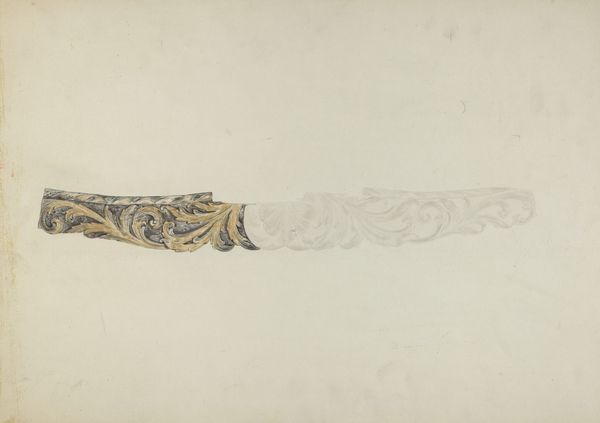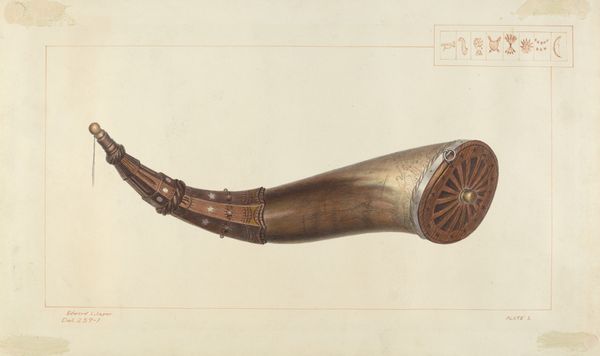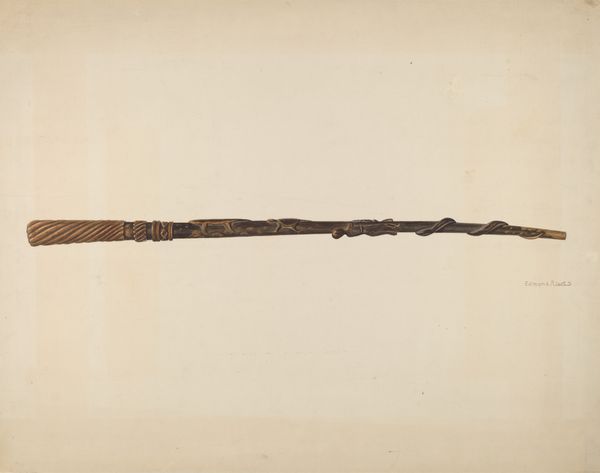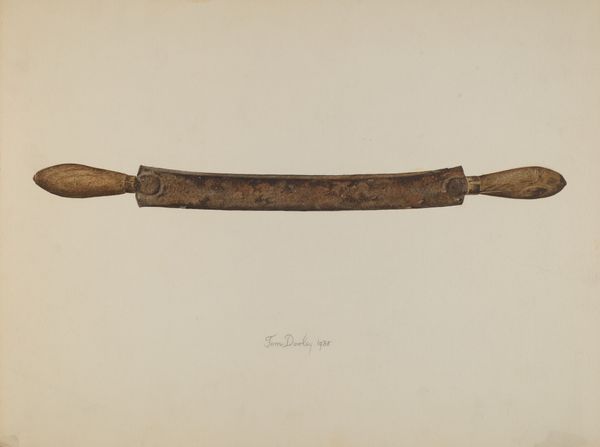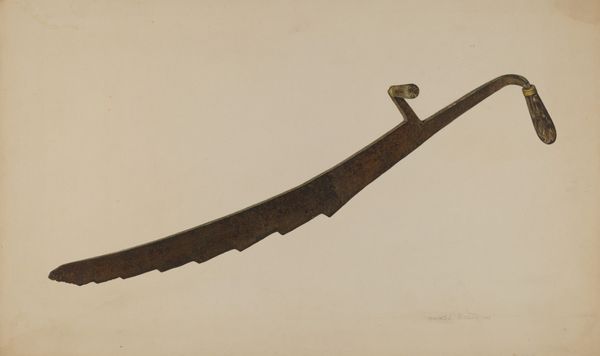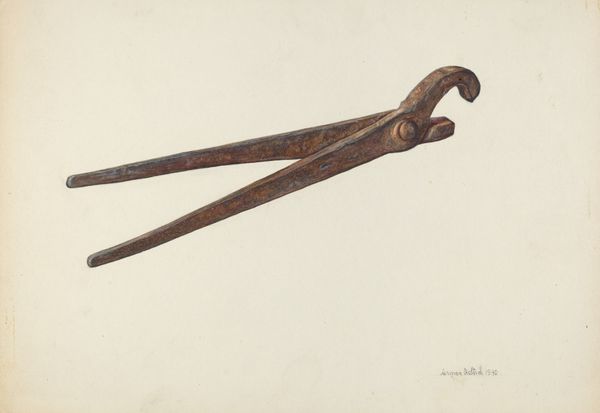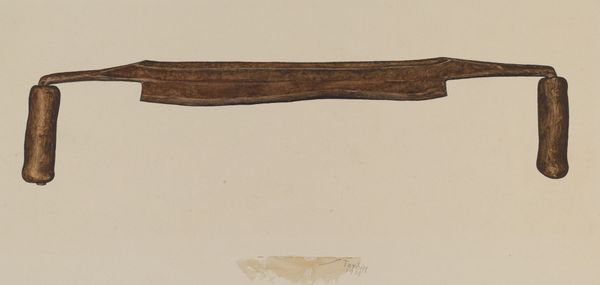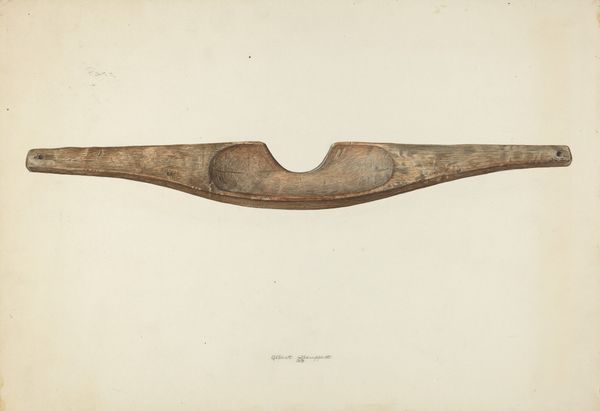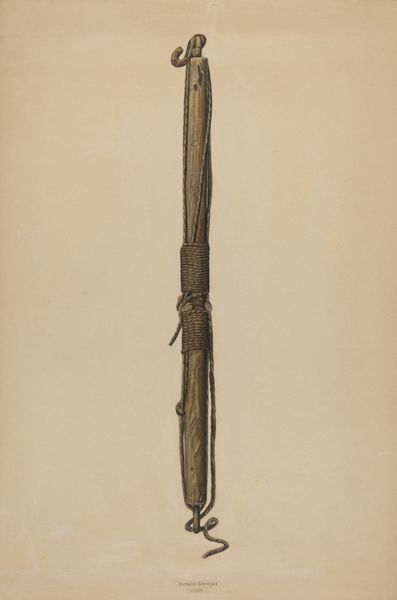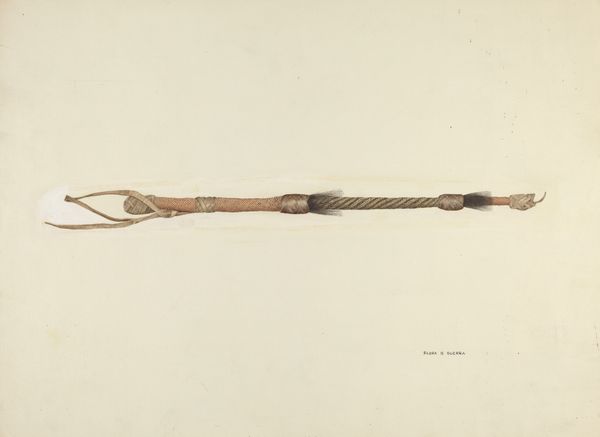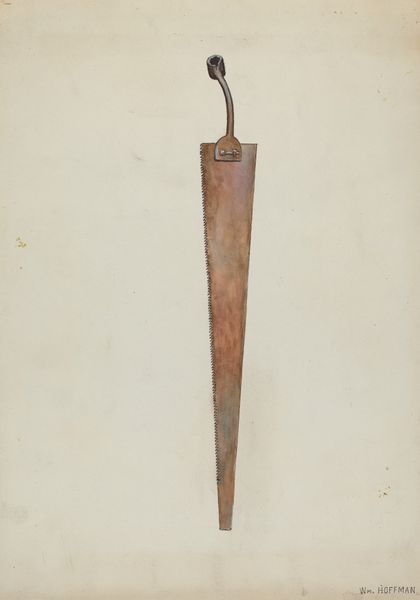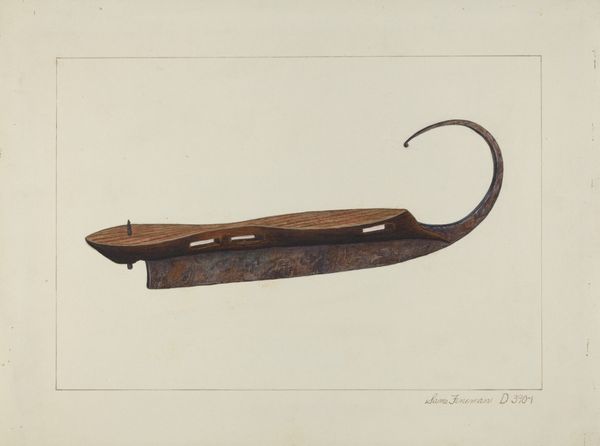
carving, watercolor, wood
#
carving
#
watercolor
#
wood
#
watercolor
Dimensions: overall: 53.3 x 68.8 cm (21 x 27 1/16 in.) Original IAD Object: 88 3/4" long; 5 1/8" wide
Copyright: National Gallery of Art: CC0 1.0
Curator: Looking at this striking watercolor by Kurt Melzer, dating to around 1937, immediately suggests a melancholic fragment rescued from a grander, bygone era. What's your take? Editor: Its immediate visual presence strikes me— the angle of the fragment across the pictorial plane, the tonal contrasts, particularly how the watercolor enhances the sculptural details… it speaks volumes about the principles of balance. Curator: Precisely. Melzer, while documented primarily for architectural studies, hints here at something more. Note how the stylized acanthus carvings seem simultaneously vibrant, picked out in this almost jarring teal blue, and fossilized, set against the aged wood grain. I wonder about its original social function. Billet heads like this are typically structural or decorative elements on ships or buildings, signs of wealth, commerce and power, right? Editor: Agreed, the layering of the watercolors adds to its intrinsic visual interest. The blue offsets the weathered gray to establish a relationship, with a dynamic that really pushes the eye across the entire composition. How are we to see its present function? As salvage, as memory? Curator: Indeed. Is this simple nostalgia, a lament for lost grandeur during the depression years? Or is Melzer subtly pointing to the decay inherent in systems of power? We are after all only presented with the head, it’s a powerful statement of lost status I would say. The incompleteness asks what that lost structure might have represented to a contemporary viewer in 1937? Editor: Interesting. Viewing purely formally, observe how Melzer creates visual balance. There’s tension in the symmetry— the directional force created from right to left. Curator: But, its historical and political dimensions surely affect the formal ones… Melzer painted the watercolor at a historical moment in the 1930s when debates about cultural value raged amid unprecedented social unrest. That can’t be removed when thinking through the significance of the overall composition. Editor: Well, viewed strictly formally, the artwork allows us to focus, really allows us to look closely, at the relations between color and surface and line. Thanks, Kurt, for this intense meditation on form. Curator: The piece offers an invitation to explore not just Melzer's formal skill, but also the role architecture plays as a symbol for culture, class, and politics at a very tumultuous time in our collective history.
Comments
No comments
Be the first to comment and join the conversation on the ultimate creative platform.
